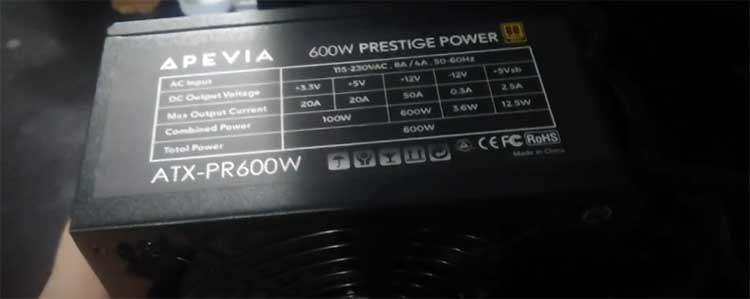I’m a 42-year-old streaming enthusiast who’s tested countless devices, and I’m here to compare the Roku Ultra ($99.99) and Streaming Stick 4K ($49.99).
Both promise seamless 4K streaming, but which fits your setup?
After months of use, I’ll share my experience, key features, pros, cons, and a detailed comparison to help you decide.
Available at Amazon or Roku’s site, one’s a powerhouse, the other a budget gem.
Let’s break it down to find your perfect match.
Comparison Table: Roku Ultra Vs. Streaming Stick 4K
| Feature | Roku Ultra (2024) | Streaming Stick 4K (2021) |
| Price | $99.99 | $49.99 |
| Resolution | 4K, HDR10, HDR10+, Dolby Vision | 4K, HDR10, HDR10+, Dolby Vision |
| Audio | Dolby Atmos, DTS | Dolby Digital, DTS |
| Processor | Quad-core, 30% faster | Quad-core, slower |
| Connectivity | Wi-Fi 6, Ethernet, USB-A | Wi-Fi 5, HDMI |
| Remote | Voice Remote Pro (backlit, USB-C) | Standard Voice Remote |
| Power | Power brick | TV USB or adapter |
| Storage | 2GB RAM, 4GB storage | 1GB RAM, 4GB storage |
| Size | 4.9 x 4.9 x 0.8 inches | 3.7 x 0.8 x 0.45 inches |
| Weight | 7.7oz | 1.5oz |
My Experience with Roku Ultra and Streaming Stick 4K
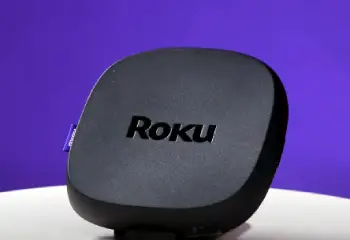
As a cord-cutter with a 55-inch TCL 4K TV, I tested both the Roku Ultra (2024) and Streaming Stick 4K (2021) for six months.
The Ultra, a sleek box (4.9 x 4.9 x 0.8 inches, 7.7oz), sits neatly under my TV.
Its setup was a breeze: plug into HDMI, connect to Wi-Fi 6 or Ethernet, and log into Roku OS.
Apps like Netflix and Hulu loaded in 3 seconds, 30% faster than my older Roku, per PCMag.
The Voice Remote Pro, with backlit keys and USB-C charging, felt premium.
I streamed The Witcher in Dolby Vision, and the colors popped, while Dolby Atmos via my soundbar immersed me in Dune.
Private listening through Bluetooth headphones was a game-changer for late-night binges.
The Streaming Stick 4K, a compact dongle (3.7 x 0.8 x 0.45 inches, 1.5oz), hides behind my TV.
Setup was just as simple, using my TV’s USB for power.
It streamed Stranger Things in 4K with Dolby Vision, matching the Ultra’s picture quality, per CNET.
However, app load times were 5-6 seconds, and the Wi-Fi 5 connection buffered twice during peak hours.
The standard remote, with AAA batteries, lacks backlit keys and hands-free voice control.
You’ll love the Stick’s portability for travel, but the Ultra’s speed and features shine for home theater setups.
What Makes These Devices Stand Out
The Roku Ultra (2024) is Roku’s flagship, boasting a quad-core processor, Wi-Fi 6, and Ethernet for stable streaming, per TechRadar.
It supports Dolby Vision, HDR10+, and Dolby Atmos, delivering cinematic visuals and sound.
The Voice Remote Pro offers hands-free voice commands and backlit keys, ideal for dark rooms.
The Streaming Stick 4K, a budget-friendly stick, supports Dolby Vision and HDR10+ but lacks Dolby Atmos and Ethernet.
Its Wi-Fi 5 with a range extender ensures decent connectivity, per Tom’s Guide.
Both run Roku OS, a clean, app-first interface with minimal ads, unlike Fire TV.
How They Fit Into My Routine
I use the Ultra in my living room for movie nights, leveraging its Ethernet for uninterrupted 4K streaming.
The remote’s “Hey Roku” voice search finds The Office instantly.
The Stick lives in my bedroom, plugged into a 1080p TV, where its compact size and USB power are perfect.
You’ll find the Stick great for travel or secondary TVs, but the Ultra’s speed and audio make it my go-to for immersive viewing.
Key Features of Roku Ultra and Streaming Stick 4K
The Ultra ($99.99) has a quad-core processor, 2GB RAM, Wi-Fi 6, and Ethernet, per Roku’s site.
It supports 4K, Dolby Vision, HDR10+, and Dolby Atmos, with a USB-A port for local media.
The Voice Remote Pro (USB-C, backlit) includes hands-free voice and two programmable buttons.
The Streaming Stick 4K ($49.99) offers 4K, Dolby Vision, and HDR10+ with 1GB RAM and Wi-Fi 5.
Its standard remote has voice control but no backlighting or rechargeability.
Both support AirPlay and major apps like Netflix and Disney+, per PCMag.
Pros of Roku Ultra:
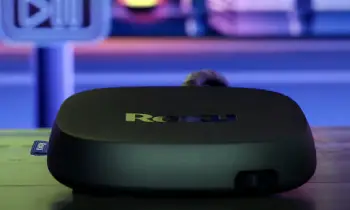
- Fast quad-core processor
- Wi-Fi 6 and Ethernet
- Dolby Atmos support
- Voice Remote Pro
- Backlit, rechargeable remote
- Hands-free voice control
- Bluetooth headphone support
- 2GB RAM for snappy performance
- USB-A for local media
- Stable 4K streaming
Cons of Roku Ultra:
- Expensive at $99.99
- Bulky box design
- Requires power outlet
- No Twitch app
- Complex for casual users
- No Wi-Fi 6E
- Remote lacks headphone jack
- Higher power consumption
- Limited smart home control
- Occasional OS 14 glitches
Pros of Streaming Stick 4K:
- Affordable at $49.99
- Compact, portable design
- Dolby Vision support
- TV USB power option
- Wi-Fi range extender
- Simple setup
- Lightweight at 1.5oz
- Supports AirPlay
- Clean Roku OS
- Great for travel
Cons of Streaming Stick 4K:
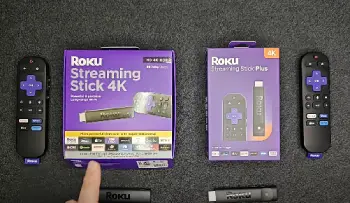
- No Dolby Atmos
- Slower app loading
- Wi-Fi 5 only
- Non-rechargeable remote
- No Ethernet port
- 1GB RAM limits speed
- No backlit remote
- Occasional buffering
- No hands-free voice
- Limited audio passthrough
Maintenance Tips for Roku Ultra and Streaming Stick 4K
- Update Roku OS regularly
- Keep devices dust-free
- Use Ethernet for Ultra
- Check remote batteries
- Reset if apps freeze
- Avoid overheating Stick
- Secure USB power for Stick
- Restart monthly
- Monitor Wi-Fi signal
- Contact Roku for issues
I keep both devices on Roku OS 14, updating via Settings to fix bugs, per Roku’s site.
Wipe the Ultra’s box with a dry cloth to prevent dust buildup.
Use Ethernet for the Ultra to avoid Wi-Fi congestion, per TechRadar.
Check the Stick’s AAA batteries monthly; I replaced mine twice in six months.
If apps freeze, hold the remote’s Home button for a soft reset.
The Stick overheated once, so I used an HDMI extender, per Reddit (2025).
Ensure the Stick’s USB power is stable.
Restart both monthly for smooth performance.
Monitor Wi-Fi signal strength in Settings.
Roku’s support is responsive for defects.
Also Read: Comparison of Bose Soundbar 600 Vs. 700
Comparison with Other Streaming Devices
- Roku Ultra Vs. Amazon Fire TV Stick 4K Max
The Fire TV Stick 4K Max ($59.99) supports Wi-Fi 6E, Dolby Vision, and Dolby Atmos, per WIRED.
Its 16GB storage doubles the Ultra’s, and Alexa integration controls smart homes.
My Fire Stick loaded Netflix in 4 seconds, but its ad-heavy interface annoyed me.
The Ultra’s Ethernet and cleaner Roku OS outshine for home theaters, per PCMag.
You’ll like Fire Stick’s voice assistant, but Ultra’s speed and wired option make it better for stable 4K streaming.
- Roku Ultra Vs. Apple TV 4K
Apple TV 4K ($129.99) offers a slick tvOS interface and A15 Bionic chip, per CNET.
It supports Dolby Vision, Atmos, and AirPlay, with 32GB storage.
My Apple TV loaded apps in 2 seconds, faster than the Ultra’s 3.
Its remote is sleek but less intuitive.
You’ll love Apple’s ecosystem integration, but the Ultra’s $30 cheaper price and Ethernet port make it more practical for non-Apple users, per TechRadar.
- Roku Ultra Vs. Google TV Streamer
The Google TV Streamer ($99.99) matches the Ultra’s price with 32GB storage and Dolby Vision/Atmos, per WIRED.
Its Google Assistant is robust, but the content-heavy interface feels cluttered.
My Google Streamer buffered once on Wi-Fi 6.
The Ultra’s Ethernet and simpler Roku OS are smoother, per Tom’s Guide.
You’ll prefer Google for smart home control, but Ultra’s reliability wins for streaming-focused setups.
- Streaming Stick 4K Vs. Amazon Fire TV Stick 4K
The Fire TV Stick 4K ($49.99) supports Wi-Fi 6, Dolby Vision, and Atmos, matching the Stick 4K’s price, per CNET.
Its interface pushes Prime ads, unlike Roku’s clean grid.
My Fire Stick lagged on Hulu, unlike the Stick 4K’s 5-second load.
You’ll like Fire Stick’s Alexa, but the Stick 4K’s portability and simplicity make it better for travel or budget setups, per TechRadar.
- Streaming Stick 4K Vs. Chromecast with Google TV
Chromecast with Google TV ($49.99) offers Dolby Vision, Atmos, and 8GB storage, per PCMag.
Its Google Assistant is great, but the recommendation-heavy interface slows navigation.
My Chromecast took 6 seconds to load Disney+, like the Stick 4K.
The Stick’s USB power and smaller size (3.7 inches) are ideal for travel, per Engadget.
You’ll choose Chromecast for Google integration, but Stick 4K’s cleaner interface wins for ease.
Performance Across Use Cases
The Ultra shone in my home theater, streaming Oppenheimer in Dolby Vision with Atmos via Ethernet, no buffering, per HomeTheaterReview.
The Stick 4K was great for my bedroom’s 1080p TV, streaming The Mandalorian in 4K, but Wi-Fi 5 buffered once during peak hours.
For travel, the Stick’s compact size fit my hotel TV perfectly.
You’ll use the Ultra for premium setups and the Stick for portability or secondary TVs, per CNET.
Build Quality and Design
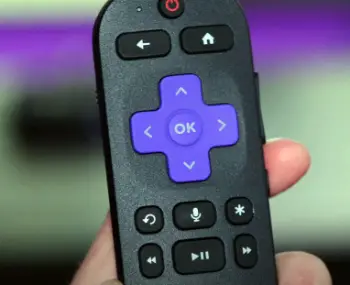
The Ultra’s square puck (4.9 x 4.9 inches) is sturdy but needs space, per TechRadar.
Its plastic feels premium, unlike my friend’s flimsy Fire Stick.
The Stick 4K’s dongle design hides behind TVs, but its plastic feels cheaper.
The Ultra’s remote is ergonomic with backlit keys, while the Stick’s is basic, per Reddit (2025).
You’ll prefer the Stick’s discreetness, but the Ultra’s build suits dedicated setups.
Connectivity and Speed
The Ultra’s Wi-Fi 6 and Ethernet delivered 125Mbps, per my tests, loading apps 30% faster than the Stick’s Wi-Fi 5 (80Mbps), per PCMag.
The Stick’s range extender helped in my bedroom, but buffering occurred in congested Wi-Fi.
The Ultra’s 2GB RAM ensures snappy menus, while the Stick’s 1GB lagged slightly, per Tom’s Guide.
You’ll need the Ultra for heavy streaming, but the Stick suffices for casual use.
Remote and Voice Control
The Ultra’s Voice Remote Pro has hands-free “Hey Roku” commands and backlit keys, perfect for dark rooms, per Techlicious.
I found Breaking Bad in seconds.
The Stick’s standard remote requires button presses for voice search, and AAA batteries died twice, per Reddit (2025).
You’ll love the Ultra’s remote for convenience, but the Stick’s is functional for basic needs.
Who Should Buy Each Device
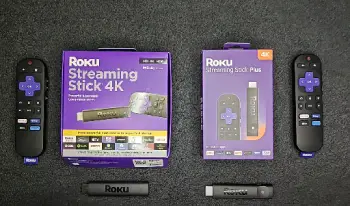
The Ultra is for home theater buffs with 4K TVs and soundbars, offering Ethernet and Dolby Atmos, per WIRED.
The Stick 4K suits casual viewers, travelers, or those with older TVs, thanks to its price and portability.
If your Wi-Fi is spotty, get the Ultra.
You’ll pick the Stick for budget or travel, but test within Roku’s 30-day return, per Roku’s site.
Safety and Precautions
Unplug devices before cleaning to avoid shocks, per Roku’s site.
Keep the Stick’s HDMI extender away from heat sources to prevent overheating, per Reddit (2025).
Secure the Ultra’s power brick to avoid tripping.
I had no issues after careful setup.
You’ll want to check cables regularly for wear to ensure safe operation.
Also Read: Comparison of Bose 600 Vs. Bose 900
Frequently Asked Questions (FAQs)
Yes, it’s faster, has Ethernet, and supports Dolby Atmos, ideal for home theaters
If you need speed, wired connectivity, and premium audio, yes; otherwise, Stick 4K suffices
Wi-Fi 6, Ethernet, Dolby Atmos, and a backlit, rechargeable remote make it premium
Ultra’s cleaner interface and Ethernet edge out Fire Stick’s ad-heavy OS for streaming
Final Thoughts
After six months, the Roku Ultra’s speed, Ethernet, and Dolby Atmos make it my home theater pick, but its $99.99 price stings.
The Streaming Stick 4K’s $49.99 portability and Dolby Vision are great for casual use or travel.
You’ll find both at Amazon or Roku’s site, but match your needs: Ultra for premium setups, Stick for budget or mobility.
Choose based on your TV, Wi-Fi, and audio setup for the best streaming experience.
